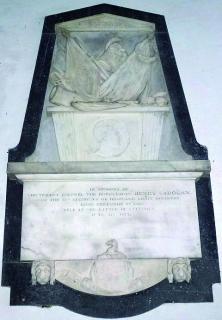 
It was only last autumn that I heard the story of Lieutenant Colonel The Honourable Henry Cadogan. His memorial is in your church, high on the wall, to the right of the Organ. That of an ancestor, Charles Sloane, Earl Cadogan is to the left of the Organ. The story of Henry is very interesting, and worth knowing about – hence, a “scoop” for Santon Downham News!
Early in the 19th century, The Honourable Henry Cadogan was a Lieutenant Colonel, commanding the Highland Light Infantry, under General Wellesley (later to become Lord Wellington). The British Army was in Spain fighting Napoleon in the Peninsular War. In 1813, the British Army was successfully pushing the French Army northwards out of Spain. At a place called Vittoria, abut 50 miles from the French frontier, Napoleon’s Army was in a commanding position on high ground, called the “Heights of Puebla”.
Success, but at a price
On the 21st June, the Highland Light Infantry, under Lieutenant Colonel Cadogan, was ordered to mount an assault on the Heights of Puebla, on the right flank of the British line. The Regiment stormed the French position and captured the Hill. Unfortunately, Colonel Cadogan was mortally wounded, but as he watched the successful assault, his last words were “God bless my brave countrymen”.
Significant battle against Napolean
Many historians say that the Battle of Vittoria was “the beginning of the end” of Napoleon’s Empire. He had been forced to withdraw from Moscow in 1812, and in 1815 he was beaten at Waterloo. It is interesting to note that, long before Tchaikovsky wrote the “1812 Overture”, about Napoleon’s retreat from Moscow, Beethoven wrote “The Battle Symphony”, which commemorates the victory over Napoleon by the British at Vittoria. Listen to that music, and you will be celebrating what Henry Cadogan did for us, in Spain, nearly two centuries ago.
So why a memorial in Santon Downham?
A final point – why should a small wall memorial, in a tiny village, be the marker for a highly successful Army officer? Our memorial is only one of three, to this man. A very large memorial, to him, was erected in St Paul’s Cathedral, and there is yet another in Glasgow Cathedral. But why is there a memorial here? As a boy in the late 18th century, he must have visited his family’s shooting estate in Santon Downham and probably attended St Mary’s Church during his holidays here. Perhaps that is why we have a memorial to him.
Next time you visit your church, or St Paul’s, take a look at one of these famous memorials, to Henry Cadogan a gallant soldier.
Andrew Kedar
|

